I may get a paid commission for purchases made after clicking a link in this post, click here to read my disclosure.
If you are someone who loves coming up with new and amazing recipes for different or specific diets and cuisines, chances are you would make one hell of a food blogger.
Food bloggers are people who create content such as videos, blog posts, and recipes around their blog for their audience.
They usually have a massive following and make up 30% of the world’s highest-paid bloggers with about 42% of their monthly blogging income from Ads, 25% from courses they sell, 11% from sponsored posts, and 10% from affiliate marketing according to an article by One hour professor.
With more than 75% of all food bloggers claiming that the content they create was for their satisfaction, it is not difficult to understand why as their love for the culinary art seems to be what brings them most of their success and readers.
In today’s post, we will be diving deep into the world of food blogging, what it entails, and how you can start your food blog from the comfort of your home and grow it into a 6-figure blog in no time.
Why Start a Food Blog?
There are many reasons why you might want to start a food blog.
Maybe you’re a talented chef who wants to share your recipes with the world. Or maybe you’re simply passionate about food and cooking, and you want to document your culinary adventures.
Whatever your reasons may be, starting a food blog can be a fun and rewarding experience.
Plus, it’s a great way to connect with other like-minded foodies from all over the world!
What Are The Most Successful Food Blogs
To give you some inspiration, we’ve rounded up seven of the biggest blogs about food out there.
These ladies (and gentlemen) have made a big name for themselves in the food blogging world, and they continue to inspire home cooks everywhere with their delicious recipes and beautiful photography.
Read on to learn more about these seven incredible food bloggers.
1. Natasha Kravchuk – Founder of Natasha’s Kitchen
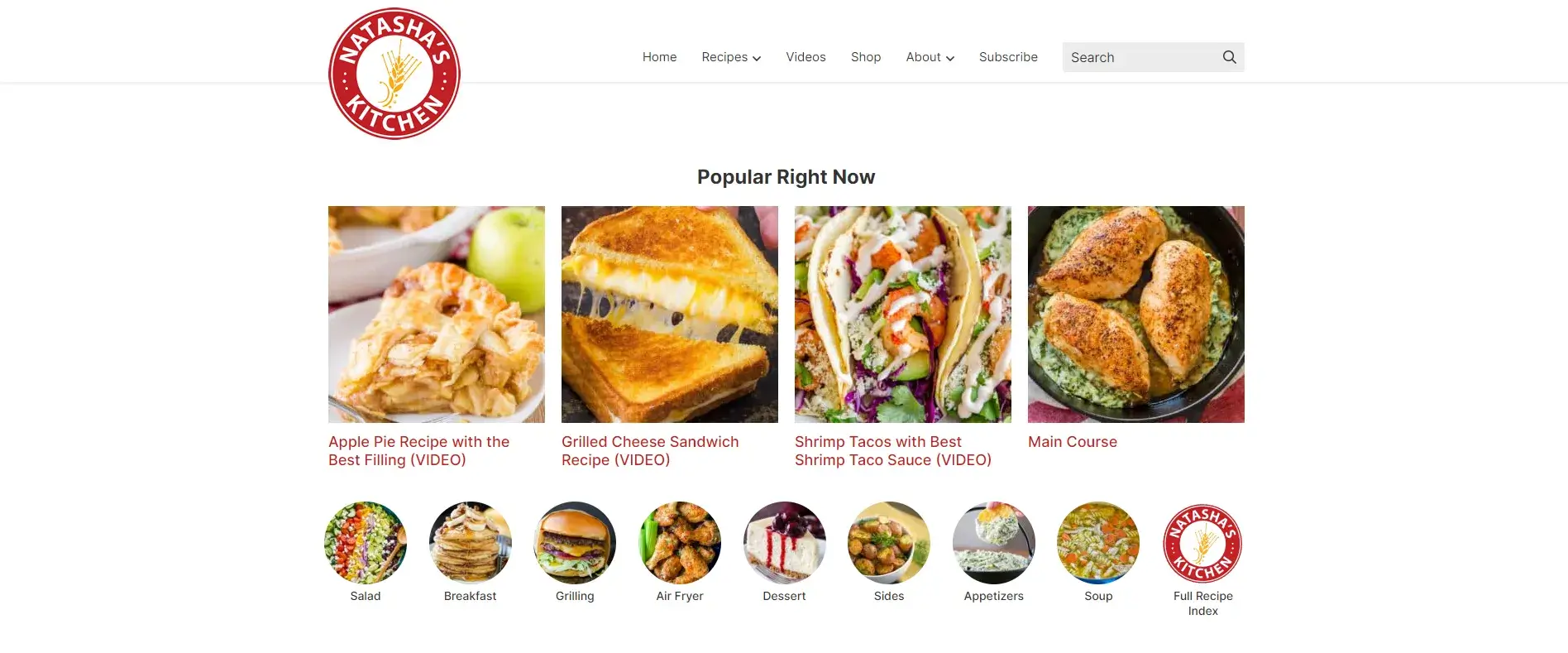
A self-taught cook, Natasha started her blog Natasha’s Kitchen as a way to document her family’s Russian heritage through food.
Natasha’s recipes are all about comfort and simplicity, and she has a particular knack for giving traditional dishes a modern twist.
Her blog has been featured in several major publications, and she was even named one of Forbes’ “Top 30 Social Media Influencers” in 2017.
2. Deb Perelman – Owner of Smitten Kitchen
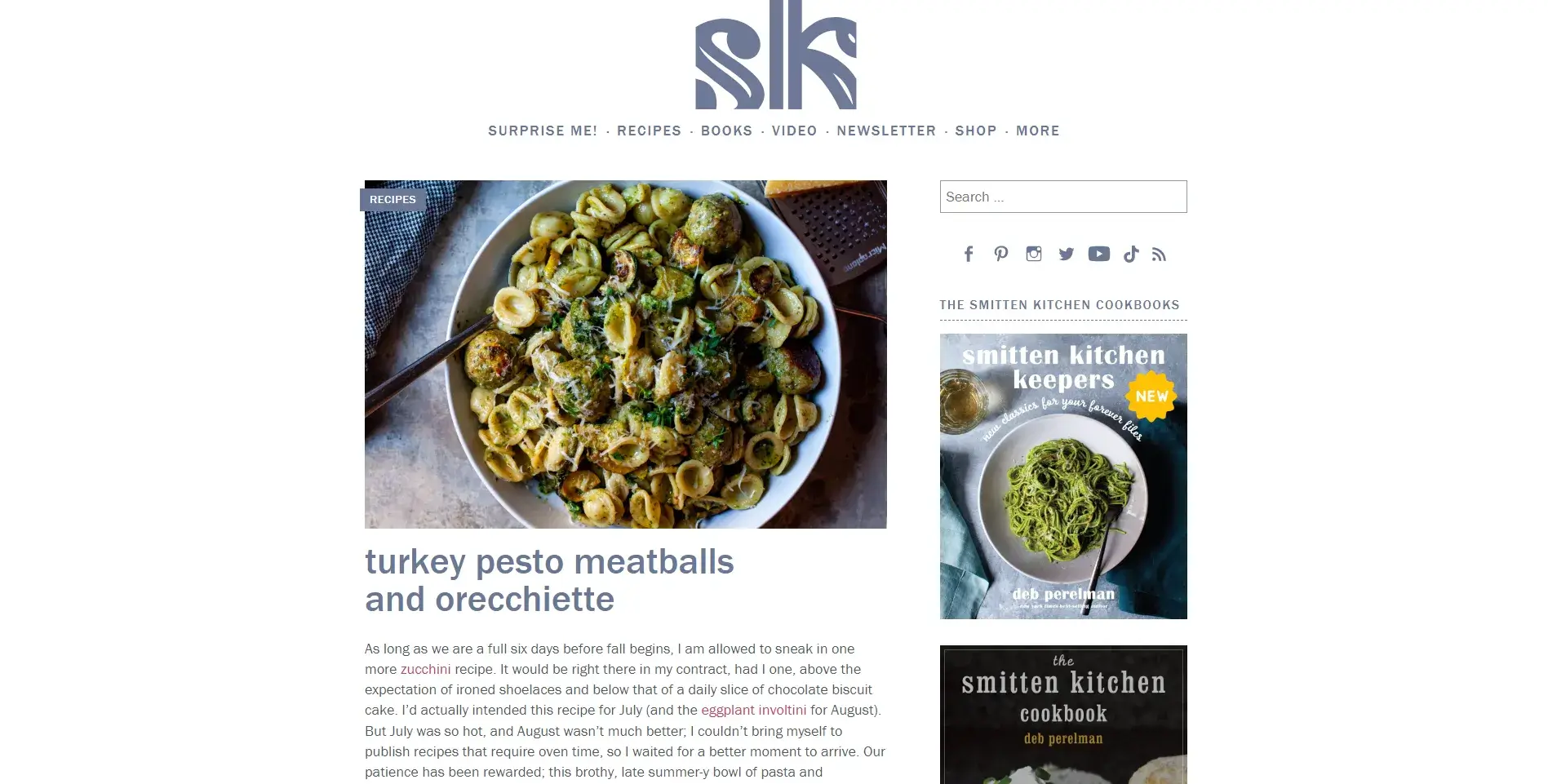
Deb Perelman is the author of Smitten Kitchen, a popular food blog that features virtuous yet delicious recipes made from whole, unprocessed ingredients.
A former software engineer, Deb began blogging about food in 2006 as a way to document her cooking adventures for friends and family and pursue her passion for cooking full-time.
These days, her blog receives over 2 million unique visitors per month, and her recipes have been featured in magazines like Martha Stewart Living and Food & Wine.
Not bad for a hobby-turned-profession!
Since then, she’s published two best-selling cookbooks and been featured in countless magazines and TV shows.
These days, Deb continues to whip up mouthwatering recipes in her New York City kitchen, delighting readers from all over the world with her simple yet inventive dishes.
3. Ree Drummond – Owner of The Pioneer Woman
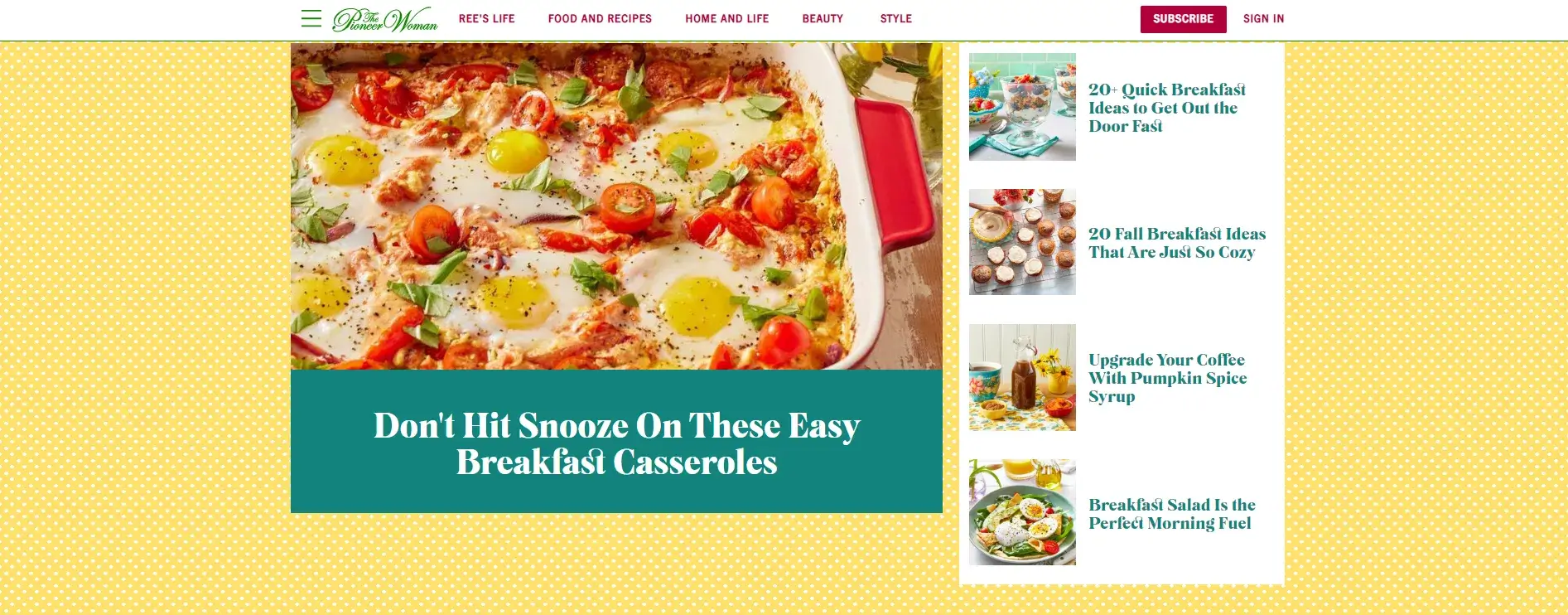
You probably know Ree Drummond best from her hit Food Network show, but she got her start as a food blogger back in 2006.
Ree provides approachable recipes for busy home cooks who want to whip up something special without spending hours in the kitchen.
In addition to recipes, Ree also shares honest stories about ranch life with her husband and four kids, giving readers a behind-the-scenes look at what it’s really like to live on a working ranch.
She is the brains behind The Pioneer Woman, a highly successful blog that chronicles her life as a rancher’s wife in Oklahoma.
Her blog also covers important topics like motherhood, homemaking tips, photography tutorials, and more.
Ree’s blog has been so successful that she’s parlayed it into multiple cookbooks, a line of merchandise at Walmart, and even her own TV show on the Food Network. Talk about living the dream!
4. Dana Shultz – Owner of Minimalist Baker
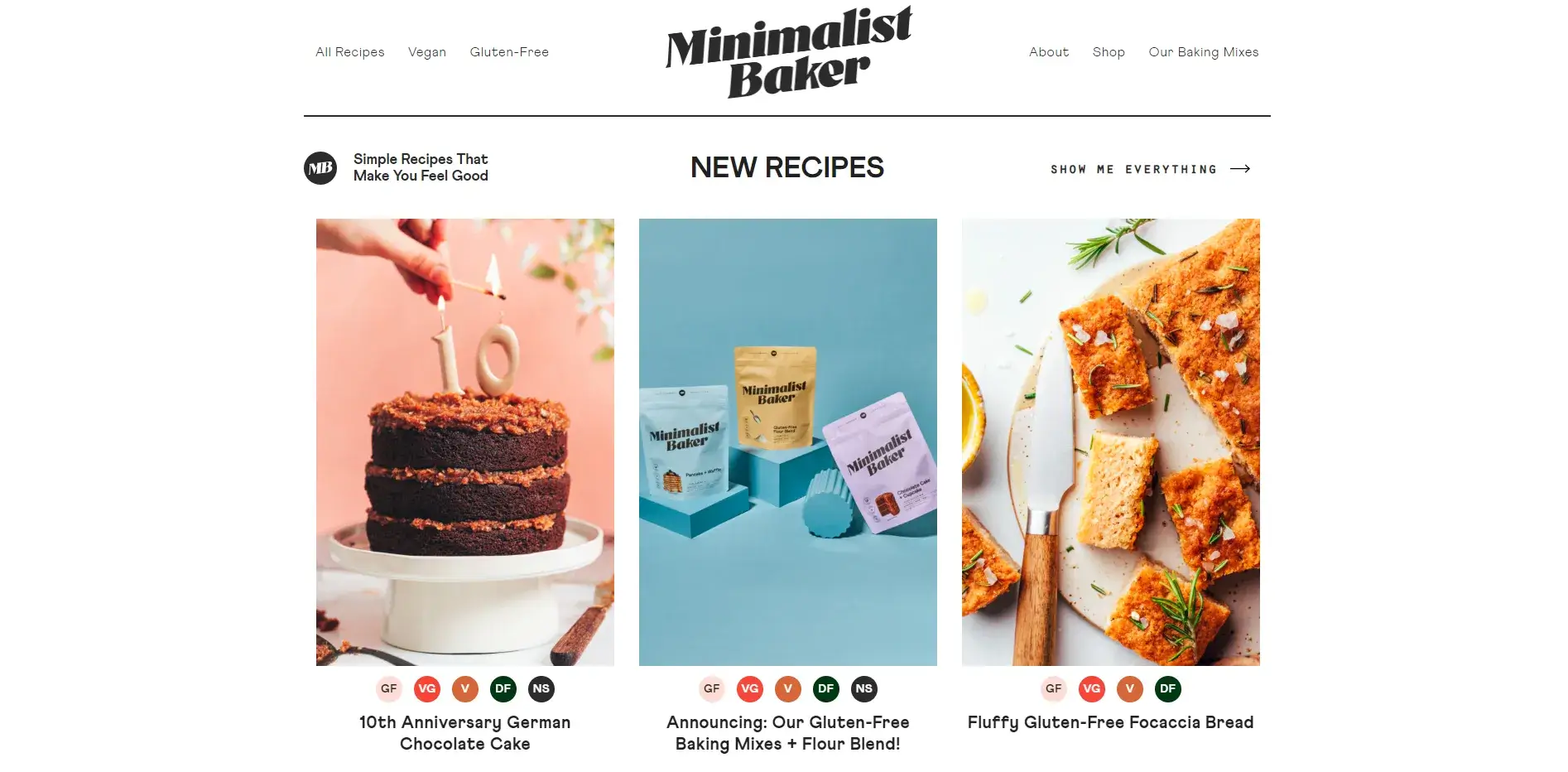
As its name suggests, Minimalist Baker focuses on quick and easy recipes that anyone can make with just a few simple ingredients.
The blog was created by Dana Shultz, who started cooking plant-based meals as a way to simplify her life and save money.
These days, Dana continues to come up with delicious vegan recipes that anyone can make – no matter how busy they are or how little time they have in the kitchen.
5. Joy Wilson – Owner of Joy the Baker
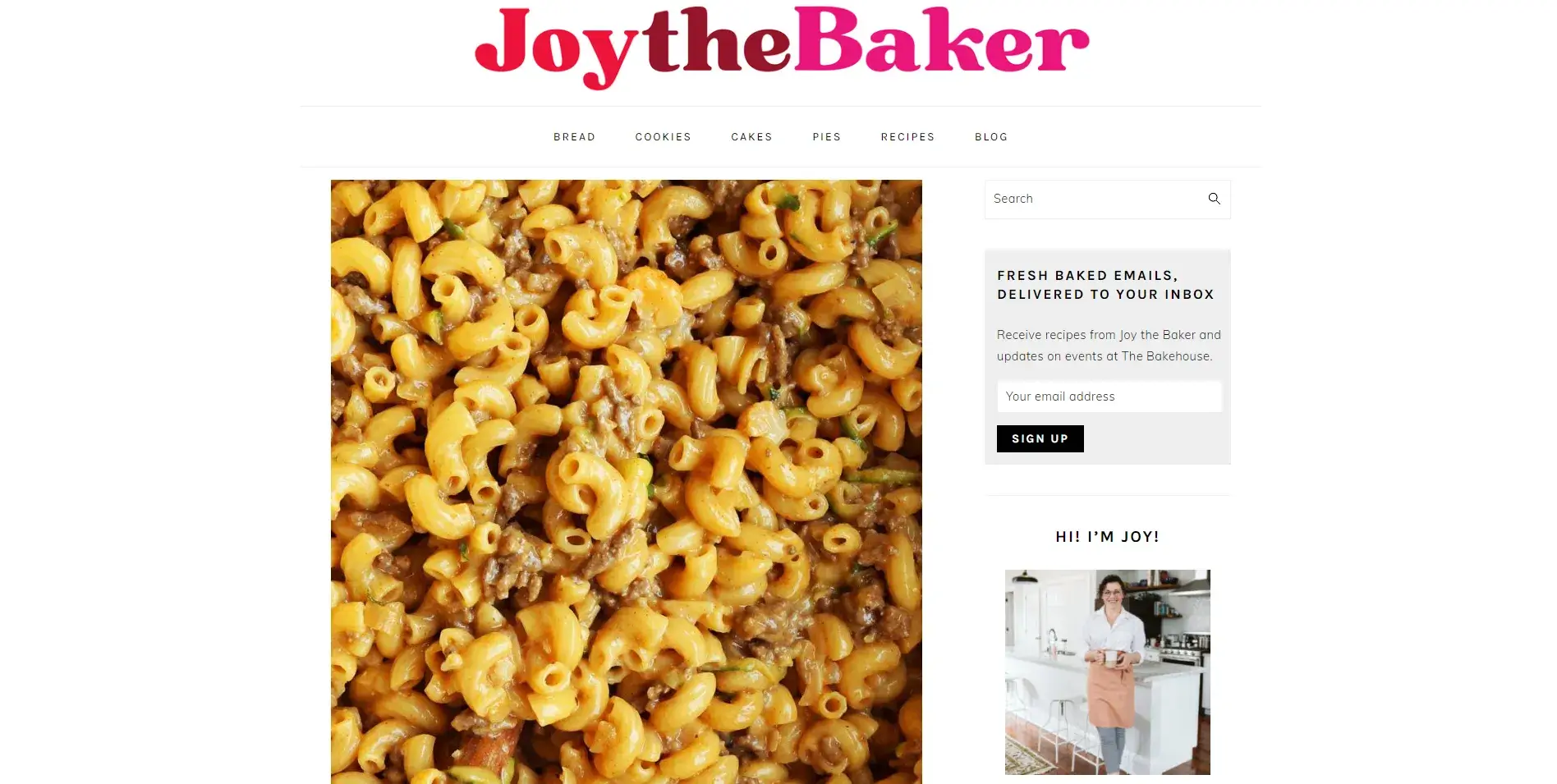
Joy Wilson is the author of Joy the Baker – one of the most popular baking blogs on the internet.
A self-taught baker with a degree in art history, A self-taught baker with a penchant for sweets (and puns),
Joy started blogging about food in 2008 as a way to share her love of baking with others and with friends and family members.
Since then she’s written two cookbooks, been featured in magazines like Better Homes & Gardens and O Magazine, and even landed herself a gig as a radio host on Food52’s podcast Burnt Toast. Not too shabby for someone who just loves to bake!
Nowadays, Joy’s blog is jam-packed with drool-worthy desserts like chocolate peanut butter cupcakes and raspberry crumb bars – perfect for when you need a little something sweet in your life!
6. Dorie Greenspan – Around My French Table
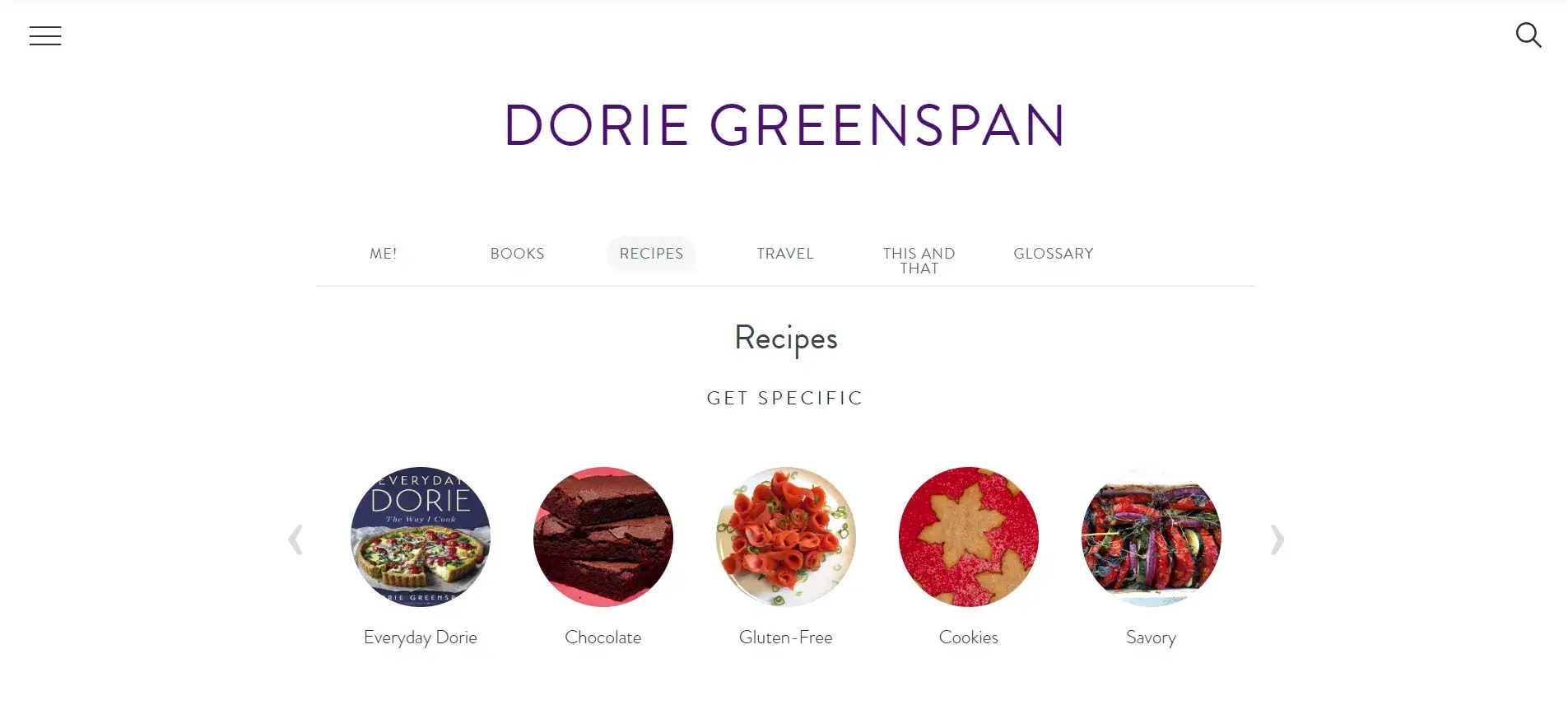
Dorie Greenspan is one of the most accomplished cookbook authors alive today,
Dorie’s recent publication, Around My French Table, the ultimate compilation of the most loved cookbook recipes has become a worldwide sensation.
Her blog Doriegreenspan.com was launched in 2002 and was one of the first blogs to focus on sharing detailed recipes with beautiful photos to match.
These days Dorie’s blog receives over 1 million unique visitors per month, evidence that people are still clamoring for well-written recipes backed up by stunning photography.
If you’re thinking about starting a food blog, her blog is definitely worth checking out.
7. Elise Bauer – Owner of Simply Recipes

Elise Bauer is the founder and author of Simply Recipes, one of the most popular food blogs on the internet.
She started blogging about food as a way to share family recipes with friends and loved ones and has grown into a full-fledged media empire, with Elise’s recipes being featured in major publications like Bon Appétit, The Kitchen, and Huffington Post.
Simply Recipes is now one of the top 100 websites in the United States, and Elise shows no signs of slowing down.
How To Start Your Own Food Blog
1. Choose a Food Blog Niche
What sets your blog apart from the millions of other food blogs out there?
Do you focus on healthy eating? Local ingredients? Budget-friendly recipes? Find your niche and stick to it.
This will help you attract readers who are passionate about the same things as you are.
2. Choose your Blogging Platform
There are many different blogging platform options available for hosting your blog (WordPress, Blogger, Squarespace, etc.).
Do some research to find the option that best suits your needs, since each platform has its pros and cons but the most popular platform for bloggers so far is WordPress since it makes creating and managing content super easy.
You can follow the instructions here to set up your website in WordPress.
3. Register your Domain name
Your blog’s name should be reflective of your niche and easy to remember, so take your time when choosing a domain name.
Once you’ve settled on a name, visit any platform that sells domain names such as Namecheap or Bluehost to register your domain so people can easily find your site online.
If your chosen name is already taken, don’t panic! Just try adding an adjective or location (e.g., “thebestfoodblogontheinternet.com”) but if you would like to be unique, I would suggest choosing a domain name that isn’t similar to an already existing website or blog.
4. Register your Web Hosting
The next step is to choose a platform that will host your website on its servers so it can easily be accessed by people searching for it.
There are so many hosting platforms to choose from but our web host of choice is BlueHost, here’s why:
Bluehost is a popular choice for hosting WordPress blogs, and there are several reasons for this:
1. WordPress Integration: Bluehost is officially recommended by WordPress.org, which means it’s optimized for running WordPress websites, making it easy to set up and manage your blog.
2. Reliability: Bluehost offers reliable hosting services with minimal downtime, ensuring that your blog is accessible to your audience 24/7.
3. User-Friendly: It has a user-friendly interface, which is great for beginners. They provide a simple, one-click installation for WordPress, so you don’t need advanced technical skills to get started.
4. Performance: Bluehost provides good website performance with solid loading speeds and performance optimization tools, which can help improve your blog’s user experience.
5. Customer Support: They offer 24/7 customer support via chat, email, or phone, which can be very helpful if you encounter any issues or have questions about your blog.
Remember that while Bluehost is a popular choice, your specific needs and preferences should guide your decision. It’s a good idea to compare hosting options and consider factors like your budget, the size of your blog, and your long-term goals.
Interested?
5. Choose, Install, and Customise your WordPress Theme
Now it’s time to make your site look pretty!
Again, there are plenty of templates available online depending on which platform you choose,
If you want something unique, you may need to hire a web designer.
Additionally, there are thousands of themes for food bloggers available on Themeisle that are not as expensive and integrate very easily with WordPress
You can check out these wordpress themes and pick one that you like.
6. Do competitor Keyword Research
- Identify Competitors:
- Search for existing food blogs in your niche.
- Look for blogs that have a similar target audience or cover related topics.
- Analyze Competitor Content:
- Browse their blog posts, recipes, and articles.
- Note the topics, formats, and writing styles they use.
- Pay attention to their most popular and engaging content.
- Keyword Research:
- Use keyword research tools like Mangools or SEMrush to find relevant food-related keywords.
- Focus on long-tail keywords specific to your niche, e.g., “healthy vegan dessert recipes.”
- Check the search volume and competition for these keywords.
- Content Gaps:
- Identify topics and keywords that your competitors have yet to cover extensively.
- These gaps represent opportunities for you to create unique and valuable content.
- Plan Your Content:
- Create a content calendar based on the keywords and topics you’ve researched.
- Prioritize high-search-volume, low-competition keywords.
- Plan to provide informative, engaging, and visually appealing content.
- Stay Updated:
- Keep monitoring your competitors and the food blogging industry.
- Adapt your strategy based on changing trends and emerging keywords.
7. Start Publishing Blog Posts
Now that everything is set up, it’s time to start writing content for your blog.
When writing your first post, think about what you want people to know about you and your blog.
What kind of tone do you want to set? What kind of information do you want to share? Write whatever feels natural, then hit publish!
You need to create killer content that will make your readers drool.
Take beautiful photos, write interesting and informative blog posts, and be sure to proofread everything before hitting publish.
If you want people to keep coming back for more, you need to give them something worth coming back for.
You can use Hubspot’s blog post templates to guide your every step.
8. Optimise for Google SEO
Keyword Research: Identify relevant keywords related to food and your blog’s content using tools like Google Keyword Planner or Mangools.
High-Quality Content: Create engaging, informative, original content that satisfies user intent.
On-Page SEO:
Use the target keyword in the title, headings, and throughout the content.
Write compelling meta descriptions to encourage clicks from search results.
Quality Images: Use high-resolution images of your food creations and optimize them for faster loading times.
Mobile-Friendly Design: Ensure your blog is responsive and performs well on mobile devices.
Page Speed: Improve loading speed by compressing images, utilizing browser caching, and minimizing code.
Internal Linking: Link to relevant articles within your blog to keep users engaged and navigate your content easily.
External Linking: Link to authoritative sources when appropriate, and seek backlinks from reputable food-related websites.
Social Sharing: Encourage readers to share your content on social media to increase visibility and traffic, you can use tools like Social Warfare or Tailwind to make this easier. You can also take advantage of our Pinterest pin templates to generate organic free Pinterest traffic to your blog.

User Experience: Create a clean, easy-to-navigate website with a logical structure, clear menus, and a user-friendly interface.
9. Promote your Blog posts
Once you’ve written and published your first post, it’s time to start promoting it online so people can read it!
Share it on social media platforms like Facebook, Twitter, and Instagram using relevant hashtags (#foodie #foodblog #recipeoftheday, etc.).
If you know anyone in the food industry (restaurants, caterers, food writers), reach out and see if they’ll share it as well, it never hurts to ask!.
Utilise social media platforms like Twitter, Facebook, and Instagram to share your recipes and drive traffic to your website.
You can also submit guest posts to other popular food blogs or collaborate with others in your niche.
By getting creative with your marketing efforts, you’ll gradually build an audience of loyal followers who can’t wait to see what deliciousness you come up with next.
Monetization Strategies for Food Bloggers
1. Advertising: Display ads on your blog using platforms like Google AdSense or join a food-specific ad network. You earn money based on the number of ad impressions and clicks.
2. Affiliate Marketing: Promote kitchen gadgets, ingredients, or cooking equipment with affiliate links. You’ll earn a commission on sales generated through your links.
3. Sponsored Posts: Partner with food brands or restaurants to create sponsored content. They pay you to feature their products or services in your blog posts.
4. Sell Digital Products: Create and sell e-books, meal plans, or cooking courses related to your niche.
5. Subscription Services: Offer premium content or a membership area with exclusive recipes, videos, or community forums for a monthly fee.
6. Cooking Classes and Workshops: Host online or in-person cooking classes and charge participants a fee.
7. Merchandise: Sell branded merchandise like aprons, mugs, or t-shirts featuring your blog’s logo or catchphrases.
8. Recipe Books: Compile your best recipes into a printed or e-book format and sell them to your audience.
9. Donations and Crowdfunding: Ask your loyal followers for voluntary donations or consider platforms like Patreon for a steady income stream.
10. Consulting and Coaching: Offer your expertise to others looking to start their own food blogs or improve their cooking skills.
11. Food Photography and Styling: Provide food photography services to local restaurants or other bloggers.
12. Teaching or Guest Speaking: Offer your knowledge and experience as a speaker or teacher at culinary events or webinars.
Tips for Successful Food Blogging
1. Be authentic, post your own recipes
Being authentic as a food blogger is all about staying true to your tastes and experiences.
Share your genuine passion for food, even if it means embracing imperfections in your cooking or food photography.
Be honest in your reviews and recommendations, and don’t compromise your integrity for sponsorships or trends.
Connect with your audience on a personal level, sharing the stories behind the dishes and your cultural influences.
Remember, authenticity shines when you’re yourself, offering a unique perspective and a sincere love for the culinary world that resonates with your followers.
2. Publish content consistently
Consistency is crucial for food bloggers for several reasons. First, it helps build and maintain an engaged audience.
Regularly publishing content keeps your followers coming back for more, increasing your blog’s visibility and attracting new readers. Second, it establishes trust and credibility.
Consistency shows your dedication to providing valuable, reliable content, which can lead to a stronger reputation in the food blogging community.
Finally, search engines favor frequently updated websites, boosting your blog’s SEO and increasing the likelihood of it being discovered by a broader audience. In the competitive world of food blogging, consistency is the key to long-term success.
3. Take original Instagram-worthy pictures
As a food blogger, capturing original, Instagram-worthy pictures is essential for several reasons.
First and foremost, visually appealing images grab the viewer’s attention in a saturated social media landscape.
High-quality, well-composed photos not only entice your audience but also convey the quality and passion behind your culinary creations.
They serve as a powerful marketing tool, helping to build your brand and attract sponsors and collaborations.
Moreover, striking food photos can enhance the overall dining experience for your followers, inspiring them to try new recipes and explore the world of gastronomy.
In essence, crafting Instagram-worthy images is not just about aesthetics; it’s a vital aspect of storytelling and engaging your audience on your delectable culinary journey.
4. Make your website user-friendly
Creating a user-friendly website is essential to provide a positive and enjoyable experience for your audience.
A user-friendly website ensures that visitors can easily navigate your content, access recipes, and engage with your blog.
It encourages longer browsing sessions and repeat visits, ultimately helping you build a loyal following.
Additionally, search engines favor user-friendly websites, potentially boosting your site’s visibility and attracting more organic traffic.
In a competitive online space, a user-friendly website is a crucial ingredient for the success of any food blogger.
5. Come up with new creative ideas
As a food blogger, consistently generating new ideas is crucial to keep your content fresh and engaging.
It helps you cater to evolving tastes and trends, maintains audience interest, and distinguishes you in a saturated space.
Experimenting with unique recipes, culinary techniques, or food stories keeps your blog dynamic and attracts a wider readership, ultimately fostering your growth and credibility in the food blogging community.
6. Stand out from the crowd
To succeed as a food blogger, it’s crucial to stand out from the crowd because the digital world is saturated with food content.
Your unique voice, creative recipes, engaging storytelling, and visually appealing presentation are your tools to capture and retain an audience.
Being distinctive helps you carve a niche, gain followers, and secure collaborations with brands, ultimately turning your passion into a profitable venture.
7. Be patient
Patience is essential for food bloggers because building a successful blog takes time.
Gaining a loyal audience, developing quality content, and establishing partnerships with brands or restaurants require consistent effort and persistence.
It can take years to see significant growth, so patience is key to weathering the initial challenges and ultimately reaping the rewards of a thriving food blog.
FAQs
What should food bloggers write about?
Food bloggers can write about a wide range of topics related to food, cooking, and dining. Here are some ideas:
1. Recipes: Share your favorite recipes, cooking tips, and step-by-step instructions for making delicious dishes.
2. Restaurant Reviews: Write about your dining experiences, including restaurant reviews, recommendations, and critiques.
3. Food Trends: Discuss current food trends, ingredients, or cooking techniques that are gaining popularity.
4. Culinary Travel: Share your food-related travel experiences, including visits to local markets, street food vendors, and restaurants around the world.
5. Dietary Preferences: Cater to specific dietary needs or preferences, such as vegetarian, vegan, gluten-free, or keto-friendly recipes.
6. Cooking Techniques: Explain and demonstrate various cooking techniques, from knife skills to sous-vide cooking.
7. Food History: Explore the history and cultural significance of different dishes and ingredients.
8. Food and Health: Write about the nutritional aspects of food, healthy eating, and the connection between food and well-being.
9. Food Photography: Share tips on food styling and photography to make your dishes look more appealing.
10. Personal Food Stories: Share personal anecdotes, memories, or stories related to food that resonate with your audience.
11. Food and Sustainability: Discuss topics like food sourcing, sustainability, and reducing food waste.
12. Cooking Gadgets and Tools: Review and recommend kitchen gadgets and tools that can make cooking easier and more enjoyable.
Remember to engage your audience by sharing high-quality photos, videos, and personal insights. Ultimately, the content should reflect your passion for food and your unique perspective as a food blogger.
Is food blogging profitable?
Food blogging can be profitable, but success varies widely. Earnings depend on factors like content quality, niche, audience size, and monetization strategies.
Some food bloggers make a substantial income through ads, sponsored content, affiliate marketing, and selling their products or cookbooks.
However, competition is high, and it can take time to build a dedicated audience and generate significant revenue. Success often requires a passion for food and a commitment to creating high-quality, unique content.
Is food blogging a good career?
Food blogging can be a fulfilling career for those passionate about food and writing.
Success depends on factors like your content, photography skills, marketing, and niche.
It can take time to build an audience and generate income, but with dedication and creativity, it can be a good career choice for some.
How To Start Blogging About Food – Conclusion
So there you have it—a crash course on how to start blogging about food and make money doing it!
Hoping to become the next big thing in food blogging? You’re not alone!
These days, there are food blogs for just about every niche and interest out there.
But even though it might seem like the internet is already saturated with culinary content creators,
there’s always room for one more – especially if you have your own unique perspective and experiences to share.
By following these simple steps and putting in some hard work,
you’ll soon be on your way to becoming a successful food blogger with a loyal following of readers who love your recipes as much as you do.
Just remember that Rome wasn’t built in a day and neither is a successful blog—it takes time, dedication, and lots of delicious food!

